Modern-day empires in the East
A peculiarity of the formation of «larger spaces», or modern-day empires in the East, is that some of them were themselves, until quite recently, objects of colonial ambition. Other imperial projects, meanwhile, are part of even larger schemes and are being built into an intricate system of hierarchical relations and vassal dependencies, over which the shadow of Washington is discernible.
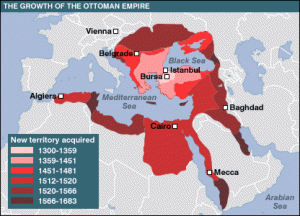 In the Near and Middle East, the greatest activity with regard to imperial construction can be seen in Turkey. As Zbigniew Brzezinski writes, «in the international arena, the modernisation and substantial secularisation of today’s Turkey is starting to win regional influence, geographically defined by the imperial Ottomans of the past», while the country’s new foreign policy, developed by Ahmet Davutoğlu, «is based on the recognition of Turkey as a regional leader within the territory of the former Ottoman Empire, including Levant, North Africa and Mesopotamia». Brzezinski adds that Turkey is useful because it is «attracted by those Central Asian states beyond the former Ottoman Empire that gained independence after the collapse of the Soviet Union and have a predominantly Turkish cultural heritage».
In the Near and Middle East, the greatest activity with regard to imperial construction can be seen in Turkey. As Zbigniew Brzezinski writes, «in the international arena, the modernisation and substantial secularisation of today’s Turkey is starting to win regional influence, geographically defined by the imperial Ottomans of the past», while the country’s new foreign policy, developed by Ahmet Davutoğlu, «is based on the recognition of Turkey as a regional leader within the territory of the former Ottoman Empire, including Levant, North Africa and Mesopotamia». Brzezinski adds that Turkey is useful because it is «attracted by those Central Asian states beyond the former Ottoman Empire that gained independence after the collapse of the Soviet Union and have a predominantly Turkish cultural heritage».
Much is said about the fact that the United States and its allies are succeeding in directing Ankara’s aspirations to the south – towards Levant – and to the east – towards the Caucasus and Central Asia. This is shown, for example, by the rapid decline in interest towards the futures of Syria and the Lebanon on the part of their former parent state, France. One gets the impression that these are Turkey’s «prize» for correct strategic behaviour and that this prize is drawing Ankara more and more into a network of dependence on the United States in the region.
Turkey is also proving to be useful to Washington because, owing to its insufficient economic potential, it will always be interested in solid American support and, consequently, can be controlled. The model Paris would use to exercise hegemony in the Western Mediterranean and Ankara in the East is simply a return to the strategic contours that existed in the 17th and 18th centuries. France’s decision to remove its veto from one of the five chapters it had blocked during negotiations between Turkey and the European Union is a significant development in terms of Turkish-French relations. There is good reason why the Turkish press commented that in comparison with his predecessor, François Hollande attached greater value to relations with Turkey and was aiming to repair and develop severed ties.
Turkish political analyst Hakan Özden writes: «Do not forget: the Turks are one of the few peoples in history who were able to stop the Chinese and if they managed it before, they can manage it again. And without the help of the Turks, the West will not be able to stop, repress or restrain the superpower that China is turning into».
As well as Neo-Ottomanism and the spirit of Islamic caliphate, an ideological basis for the construction of a new Turkish empire is pan-Turkism. In fact, a doctrine was developed by Kemal Atatürk, according to which all Turkish-speaking nations should be united in a «Great Turan» under the aegis of Turkey. Nurer Uğurlu, the author of «Turkish Nations», maintains, for example, that «the influence of Turkish nations extended from the Danube to the Ganges, from the Adriatic to the East-China Seas, and reached Peking, Delhi, Kabul, Isfahan, Baghdad, Cairo, Damascus, Morocco, Tunisia, Algeria and the Balkan Peninsula».
At the state level, Ankara is making considerable effort to establish the Cooperation Council of Turkic States with its headquarters in the former imperial capital, Istanbul. At one of the organisation’s summits, Turkish president Abdullah Gül announced that «as Turkey is involved in G20 forums, it is able to represent the interests of the entire Turkish world». A common flag and coat of arms have been adopted for the Council. Of the former post-Soviet Turkish republics, only Uzbekistan is obstinately ignoring the activities of this organisation.
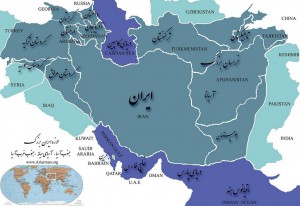 Despite the economic blockade, the recreation of the Iranian (Persian) Empire is gaining momentum. For example, the idea of a «Great Islamic Iran», developed by the Secretary of the Expediency Discernment Council, Mohsen Rezaei, puts forward the Iranian-speaking elite of various countries as a strategy for creating a large cultural and economic space. Rezaei writes, «After the collapse of Iran as a vast cultural area and the division of a united nation into several parts at the end of the Afshar dynasty and the beginning of Qajar rule, a minimum requirement of the Iranian people from their government and politicians was the establishment of economic, cultural and political alliances among themselves». However, for a long time «the minds of patriotically-minded politicians and intellectuals were focused on emancipation from the chains of colonialism and despotism, hence there was no opportunity to seriously discuss the consolidation of governments located within a fragmented Iran». Mohsen Rezaei believes that modern-day Iran is just part of a Great Iran alongside Afghanistan, Tajikistan, Kurdistan and Azerbaijan. Poetry, science, heroic epos and history are all the common cultural heritage of Iranian nations. To believe that this heritage only belongs to the population of the modern-day state of Iran means belittling the merits of peoples from neighbouring countries and reducing the concept of «Iranianism» to nothing. In geopolitical terms, Tehran’s great Iranian ambitions are discernible, for example, in the railroad project between Masshad, Herat and Dushanbe.
Despite the economic blockade, the recreation of the Iranian (Persian) Empire is gaining momentum. For example, the idea of a «Great Islamic Iran», developed by the Secretary of the Expediency Discernment Council, Mohsen Rezaei, puts forward the Iranian-speaking elite of various countries as a strategy for creating a large cultural and economic space. Rezaei writes, «After the collapse of Iran as a vast cultural area and the division of a united nation into several parts at the end of the Afshar dynasty and the beginning of Qajar rule, a minimum requirement of the Iranian people from their government and politicians was the establishment of economic, cultural and political alliances among themselves». However, for a long time «the minds of patriotically-minded politicians and intellectuals were focused on emancipation from the chains of colonialism and despotism, hence there was no opportunity to seriously discuss the consolidation of governments located within a fragmented Iran». Mohsen Rezaei believes that modern-day Iran is just part of a Great Iran alongside Afghanistan, Tajikistan, Kurdistan and Azerbaijan. Poetry, science, heroic epos and history are all the common cultural heritage of Iranian nations. To believe that this heritage only belongs to the population of the modern-day state of Iran means belittling the merits of peoples from neighbouring countries and reducing the concept of «Iranianism» to nothing. In geopolitical terms, Tehran’s great Iranian ambitions are discernible, for example, in the railroad project between Masshad, Herat and Dushanbe.
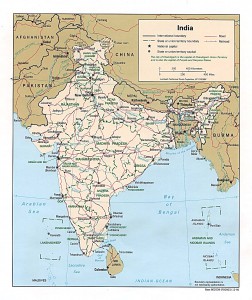 In South Asia, India is openly laying claim to hegemony. Unlike Turkey, India is trying to act like an independent power and is not given to listening to «outside advice». Nevertheless, in Washington’s strategic calculations, India is far too large to be left unsupervised. A special role here belongs to the USA’s closest ally and India’s former parent state – England. British Prime Minister David Cameron recently visited India at the head of a delegation of approximately 140 people. The aim was to increase political influence in India and, most importantly, to clear the way for British transnational corporations. There are also hopes for the promotion of British military technology. The «Eurofighter» jet, which England is involved in the manufacturer of, lost the tender to the French «Rafale» fighter jet. Paris, however, has not yet succeeded in closing the transaction and Delhi is delaying the process. London thinks that the Indians have had second thoughts and are going to reject the French. At the same time, following the collapse of the «nuclear deal», optimism in Washington that it will be easy to involve India in a «coalition of democracies» on anti-China grounds has diminished.
In South Asia, India is openly laying claim to hegemony. Unlike Turkey, India is trying to act like an independent power and is not given to listening to «outside advice». Nevertheless, in Washington’s strategic calculations, India is far too large to be left unsupervised. A special role here belongs to the USA’s closest ally and India’s former parent state – England. British Prime Minister David Cameron recently visited India at the head of a delegation of approximately 140 people. The aim was to increase political influence in India and, most importantly, to clear the way for British transnational corporations. There are also hopes for the promotion of British military technology. The «Eurofighter» jet, which England is involved in the manufacturer of, lost the tender to the French «Rafale» fighter jet. Paris, however, has not yet succeeded in closing the transaction and Delhi is delaying the process. London thinks that the Indians have had second thoughts and are going to reject the French. At the same time, following the collapse of the «nuclear deal», optimism in Washington that it will be easy to involve India in a «coalition of democracies» on anti-China grounds has diminished.
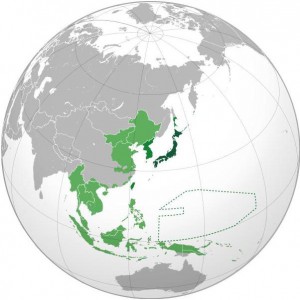
In the Far East, there is no reason to compare Japan‘s present-day claims with its imperial project «Greater East Asia Co-Prosperity Sphere» of the Second World War period. The sovereignty of Japan is still limited and part of its territory is still occupied by American troops. However, in view of Japan’s economic and even military potential, Tokyo is a key vassal of the American empire in the Asia-Pacific region. America has been mobilising the Japanese for global projects to «restrain» China and Russia, providing them with illusive hopes that the ephemeral disputes over the Diaoyudao Islands and the deadlocked debate regarding the Kurils will be resolved in their favour. By supporting the Japanese in their disputes more with words than actions, and by not associating themselves with any kind of legally binding promises, the Americans in their policy in the APR can rely on the whole of Japan’s considerable potential. In a perfect world, the White House would also like to see South Korea in exactly the same capacity. Washington also understands that because of its historical problems with Japan, building links with Seoul will have to be done directly, rather than through Tokyo.
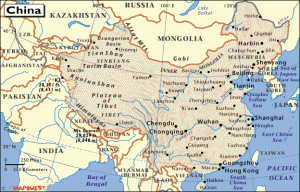 In American strategic thinking, China in the 21st century is increasingly becoming for America what the Soviet Union was in the 20th century, which is to say its main rival in the field of world politics. German experts believe that the withdrawal of troops from Iraq and Afghanistan, the relative restraint of the United States in Libya and now in Syria, as well as the withdrawal of American military brigades from Germany is all associated with a strategy which supposes an almost complete switch of Washington’s attention to China…
In American strategic thinking, China in the 21st century is increasingly becoming for America what the Soviet Union was in the 20th century, which is to say its main rival in the field of world politics. German experts believe that the withdrawal of troops from Iraq and Afghanistan, the relative restraint of the United States in Libya and now in Syria, as well as the withdrawal of American military brigades from Germany is all associated with a strategy which supposes an almost complete switch of Washington’s attention to China…
America is planning to transfer 60% of its naval forces by 2020, as well as six of its 11 aircraft carriers in the Pacific Ocean, having placed them, primarily, in military bases in Japan and South Korea that have existed since the end of the Second World War. At the same time, the United States and China are battling for influence in the South China Sea, while in countries like Vietnam, Cambodia, Myanmar, Thailand, the Philippines, Malyaysia, Singapore, Indonesia, Brunei and separatist Taiwan, Beijing is declaring this sea its own on the basis of historic right – in the 15th century, it belonged to the empire. An impartial analysis of China’s imperial policy, meanwhile, shows that its south-easterly direction is a constant. China will not only have to master the gigantic region of East Asia with growing opposition from the USA, its allies and vassals, but also invest significant resources on retaining it. In the north by Russia and to the West in Central Asia, Beijing is primarily interested in a secure rear and the possibility of obtaining raw materials. There is no other reason for the Chinese to acquire additional territory here other than the constant intimidation of Russia and West-Central Asians. Russia is a strong nuclear and missile power, and the kinds of marginally habitable areas where the Chinese are allegedly dreaming of settling, they would not live in in their own country. There is also no noticeable desire to connect Central Asia with the ever-rebellious Xinjiang in Beijing. This is understood perfectly well in Moscow, of course, which is why it is unlikely that Washington’s calculations to draw Moscow into its orbit with the aim of restraining China will be realised.
Source: Strategic Culture Foundation
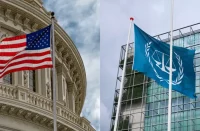
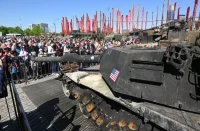
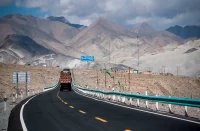





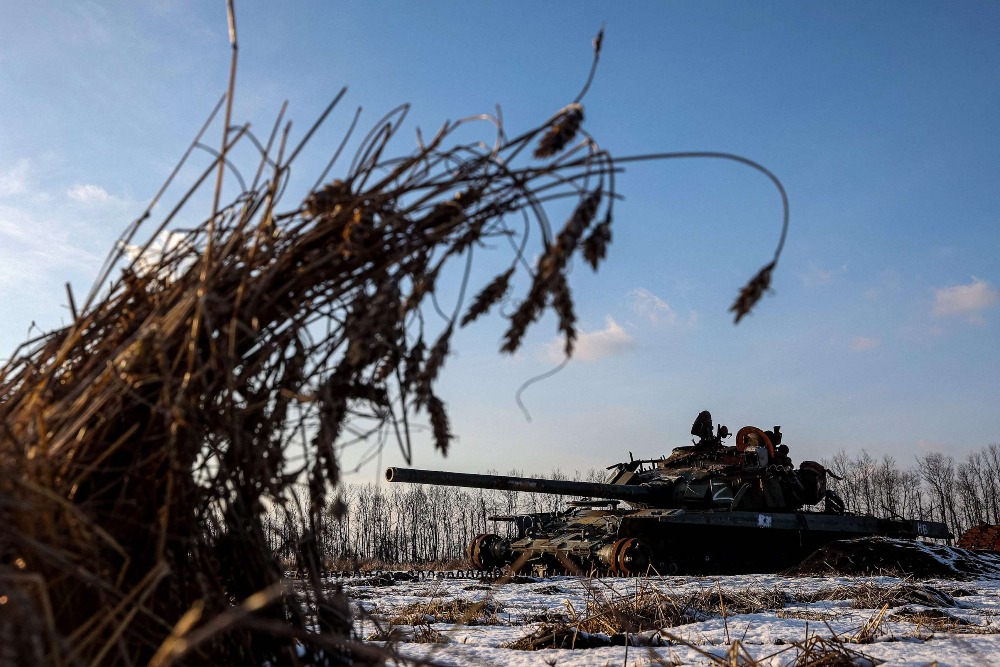





Pingback: The Return of Empires (VI) | Oriental Review